Top 10 Most Beautiful Historical Sites in Russia
Russia is the world's largest country, covering much of eastern Europe and northern Asia. The Russian Federation is well-known for its geological and natural ... read more...landscapes and historical and cultural sites. Here are the 10 most beautiful historical sites in Russia that you should know about.
-
The Kremlin, which was originally established in the 12th century as a walled castle with wooden buildings, has evolved to be a majestic complex and Russia's political center. The massive complex covers 66 acres (27 hectares) and is encompassed by almost 1.5 miles (2.5 kilometers) of defensive walls, which include 20 towers measuring over 260 feet (80 meters) in height, the tallest of which is the Spasskaya Tower. Its massive red walls and star-topped turrets are an instantly identifiable icon of Moscow.
Russian kremlins, with five palaces, four cathedrals, and the surrounding Kremlin Wall with Kremlin towers. In addition, the Grand Kremlin Palace, originally the Tsar's Moscow palace, is located inside this complex. The complex presently serves as the official house of the Russian Federation's President as well as a museum, with around 3 million visitors in 2017. The Kremlin has a view of the Moskva River to the south, Saint Basil's Cathedral and Red Square to the east, and Alexander Garden to the west.
The name "Kremlin" means "fortress within a city" and is frequently used metonymically to refer to the Russian Federation's administration. It historically referred to the Soviet Union's government and its top members such as general secretaries, premiers, presidents, ministers, and commissars. The study of Soviet and Russian politics is referred to as "Kremlinology".
The Kremlin is available to the public and offers guided tours for individuals and groups. The Armoury Chamber, Tsar Cannon, Tsar Bell, artillery pieces, and an exhibition of Russian wooden sculptures and carvings are all visible.
Location: Moscow, Russia
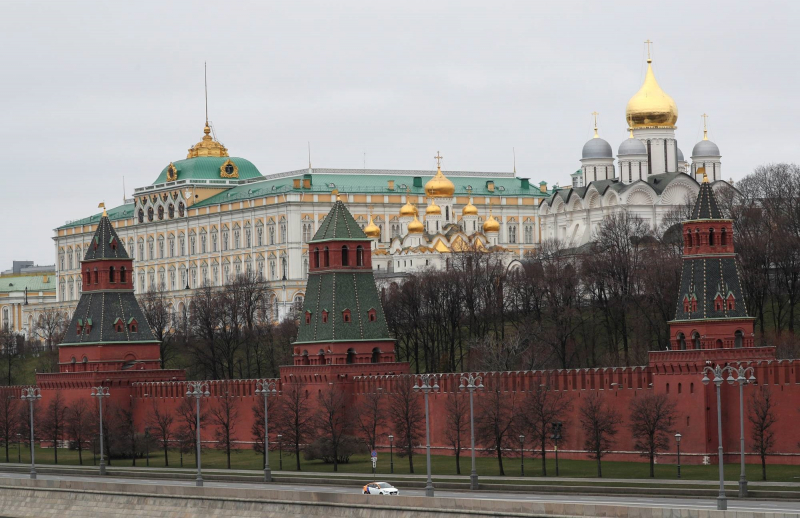
Photo: japantimes.co.jp Video: Miki Sivan -
Red Square is one of the oldest and largest squares in Moscow, Russia's capital. It is regarded as one of the most famous squares in Europe and the world due to its historical value and the neighboring historical structures. It is situated in the historic center of Moscow, within the eastern walls of the Kremlin. It is Moscow's city landmark, including prominent structures such as Saint Basil's Cathedral, Lenin's Mausoleum, and the GUM. It has also been a UNESCO World Heritage Site since 1990.
As one of the most beautiful historical sites in Russia, the Red Square is 70 meters wide and 330 meters long, approximately rectangular in shape. It runs lengthwise from northwest to southeast along a section of the Kremlin wall that constitutes its southwest boundary. The area is flanked in the northeast by the GUM department store building and the historic Kitai-Gorod district, in the northwest by the State Historical Museum and the Resurrection Gate, and in the southeast by Saint Basil's Cathedral. Tverskaya Street begins northwest of the plaza, behind the State Historical Museum building, and to the southeast is the so-called Basilius slope, which leads to the Moskva River, which flows down and over a bridge to the Zamoskvorechye District.
Nikolskaya Street, named after the Nikolaus Tower of the Kremlin, which is directly opposite, and the Ilyinka, both of which have existed since the 14th century and were once vital arteries of old Moscow, branch off to the northeast from Red Square. The square itself is now a pedestrian zone, with the exception of the access road extending through it to the Kremlin's Savior Gate.
Paintings by Vasily Surikov, Konstantin Yuon, and others illustrate the rich history of Red Square. The square was designed to be Moscow's major marketplace. It was also the venue of several official festivities and proclamations, as well as the occasional crowning of Russia's Tsars. Since that time, the square has been gradually built up and has been used for official occasions by all Russian governments.
Location: Moscow, Russia
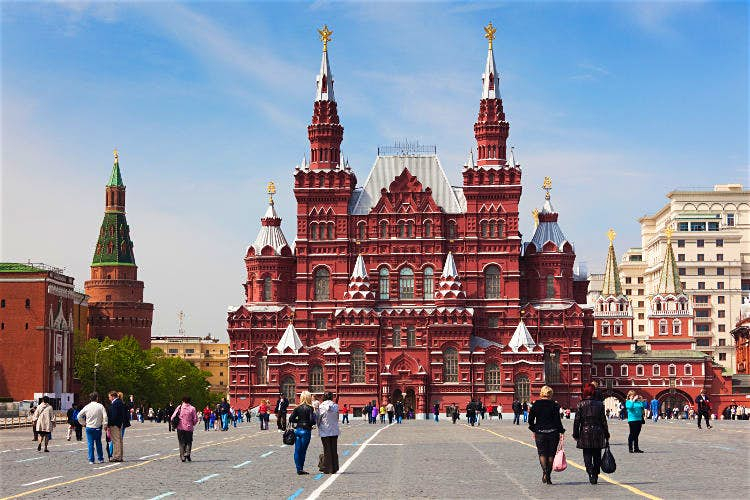
Photo: ootlah.com Video: Walk About -
The Cathedral of Vasily the Blessed, often known as Saint Basil's Cathedral, is an Orthodox church in Moscow's Red Square and one of Russia's most recognized cultural landmarks. The Cathedral of the Intercession of the Most Holy Theotokos on the Moat, now a museum, is formally known as Pokrovsky Cathedral. It was built under Ivan the Terrible's orders between 1555 and 1561 to commemorate the conquering of Kazan and Astrakhan. Until the erection of the Ivan the Great Bell Tower in 1600, it was the tallest building in the city.
The original Trinity Church, subsequently Trinity Cathedral, had eight chapels organized around a ninth, central chapel dedicated to the Intercession; a tenth chapel was built in 1588 over the burial of the venerated local saint Vasily. In the 16th and 17th centuries, the church was popularly known as the "Jerusalem," and it functioned as an allegory of the Jerusalem Temple in the annual Palm Sunday parade attended by the Patriarch of Moscow and the Tsar.
As one of the most beautiful historical sites in Russia, Saint Basil's Cathedral has nine domes and is designed like a bonfire's flame ascending towards the sky. The cathedral foretold the 17th-century apogee of Russian national architecture.
As part of the Soviet Union's anti-religious activities, the church was confiscated from the Russian Orthodox community and has operated as a component of the State Historical Museum since 1928. It was totally secularized in 1929 and is still a Russian Federation state property. Since 1990, the church has been a part of the UNESCO World Heritage Site of the Moscow Kremlin and Red Square. Since 1997, following the fall of the Soviet Union in 1991, weekly Orthodox Christian services with a prayer to St. Basil have been reinstated.
Location: Red Square, Moscow, Russia
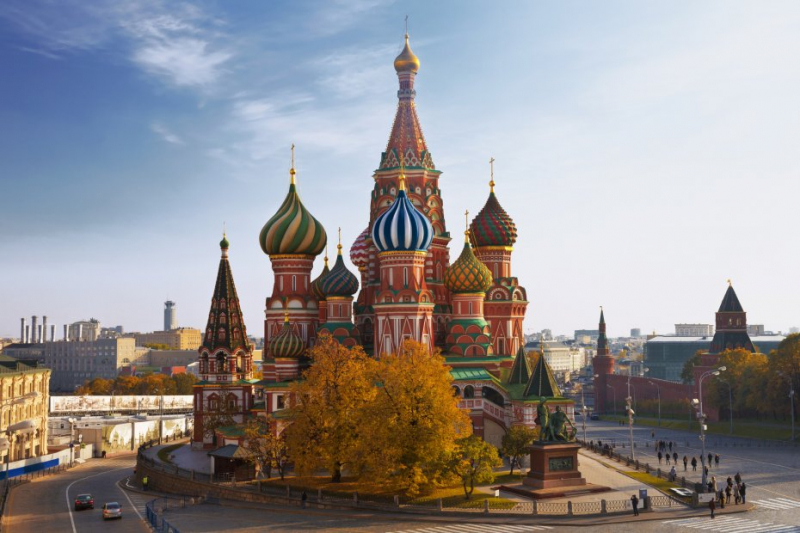
Photo: bautrip.com Video: Firebird Tours -
None of Russia's hundreds of resurrected monasteries has a more lovely setting than that linked with St. Nilus Stolobensky. Nilova Pustyn, which is located on a small island in Lake Seliger (Tver Region), is intriguing in all seasons. Its beauty is poetic in midsummer when the little Stolobny Island's shores are draped with reeds and water lilies.
Although several of the monastery's buildings have parts of 17th-century walls, the majority of the churches were rebuilt in the middle of the 18th century. Among the earliest is the Church of St. Nilus Stolobensky, a Baroque edifice built over the East Gate in 1751-1755. Although the dome was destroyed during the Soviet regime, parts of 19th-century wall paintings have remained.
The monastery's oldest surviving church, dedicated to St. Nilus, was built in 1699-1700 near the monastic infirmary. It was re-consecrated in 1723 as the Church of All Saints, and its customary five cupolas were reduced to one during the nineteenth century. The Church of All Saints, which was severely damaged during the Soviet period, is now being restored on the northwest corner of the monastery's main square, near the West Gate.
The West Gate itself holds another majestic Baroque tower church, dedicated to Sts. Peter and Paul and erected in 1760-64. Beyond the West, Gate is a second quadrangle enclosed by a pilgrim dormitory, a hotel for tourists, and other 18th-century cloister constructions.
The massive Epiphany Cathedral and its bell tower dominate the main square. The island has had an Epiphany Church since the end of the 16th century. It was restored as the monastery grew throughout the ages. Throughout this time, the monastery enjoyed royal favor, and Tsar Alexander I paid it a visit in 1820.
Location: Lake Seliger, Russia
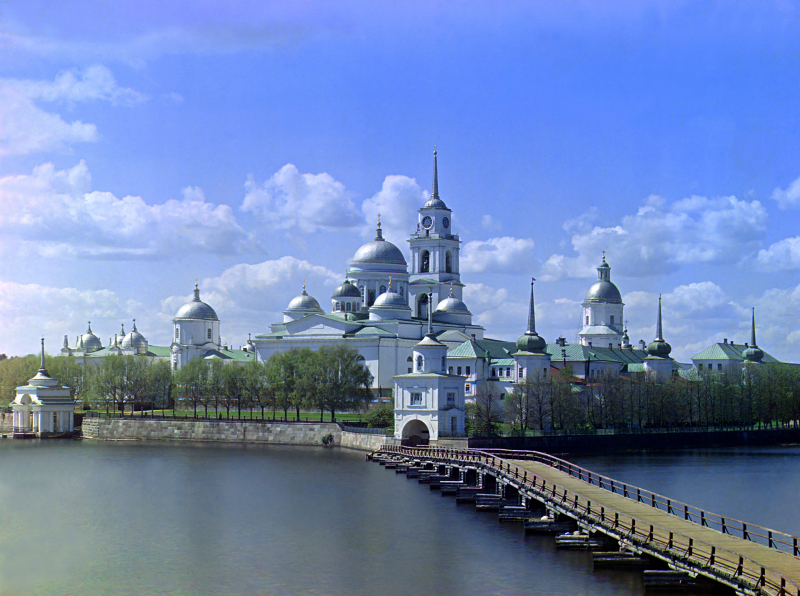
Photo: en.wikipedia.org Video: Traveler Vladimir Cat -
The Winter Palace is a palace in Saint Petersburg that served as the Russian Emperor's formal home from 1732 to 1917. The Hermitage Museum presently occupies the palace and its environs. The current and fourth Winter Palace was erected and altered practically continually between the late 1730s and 1837, when it was badly damaged by fire and promptly rebuilt, between Palace Embankment and Palace Square, adjacent to the site of Peter the Great's initial Winter Palace. The storming of the palace in 1917 became an iconic emblem of the Russian Revolution, as shown in Soviet art and in Sergei Eisenstein's 1928 film October.
The emperors built their palaces on a grand scale in order to reflect Imperial Russia's greatness and authority. By the end of the nineteenth century, the tsars governed over 22,800,000 square kilometers and 125 million subjects from the palace. The Winter Palace was designed in what became known as the Elizabethan Baroque style by several architects, most notably the Italian Bartolomeo Rastrelli (1700–1771). The green-and-white palace is an elongated rectangle with the main façade that is 215 meters (705 feet) long and 30 meters (98 feet) high. The Winter Palace is said to include 1,886 doors, 1,945 windows, 1,500 rooms, and 117 stairs.
When demonstrators marched toward the Winter Palace in 1905, the Imperial Family had decided to live at the more secure and secluded Alexander Palace at Tsarskoe Selo, returning to the Winter Palace exclusively for formal and state occasions. Following the February Revolution of 1917, the palace served as the seat of the Russian Provisional Government, which was eventually led by Alexander Kerensky. Later that year, a squad of Red Guard soldiers and sailors attacked the palace, ushering in the Soviet state.
Location: Saint Petersburg, Russia
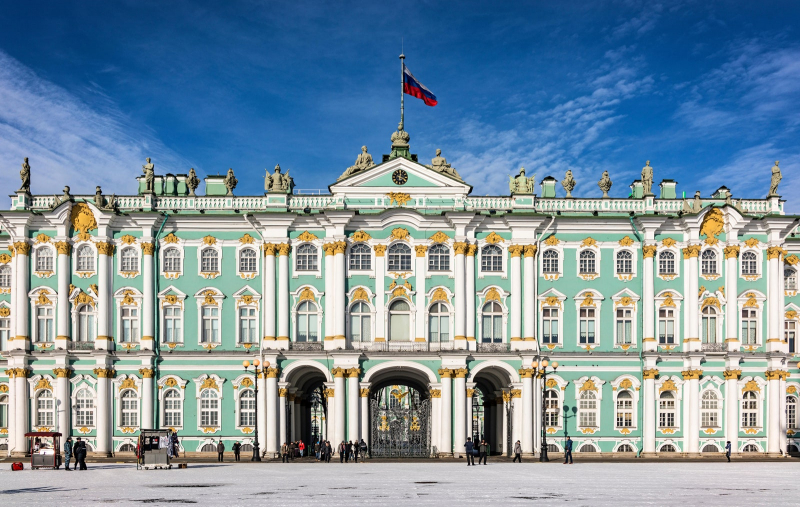
Photo: thetravelshots.com Video: The State Hermitage Museum -
Kizhi is an island in the Republic of Karelia (Medvezhyegorsky District), Russia, in the geometrical center of Lake Onega. It is 6 kilometers long, 1 kilometer wide, and 68 kilometers away from Petrozavodsk, the capital of Karelia.
Settlements and churches on the island have been documented since the 15th century. The population was rural, but the government forced them to assist in the construction of ore mining and iron industries in the area, resulting in the Kizhi Uprising in 1769–1771. By the 1950s, most communities on the island vanished, and only a small agricultural community remained. On the island, which is today known as Kizhi Pogost, two significant churches and a bell tower were built in the 18th century. Hundreds of antique wooden buildings were relocated to the island from various sections of Karelia in the 1950s for preservation. Today, the entire island and surrounding surroundings serve as a national open-air museum, with over 80 old wooden structures. The most well-known is the Kizhi Pogost, a UNESCO World Heritage site.
Kizhi island is about a kilometer away from the major islands and peninsulas of Onega Lake, yet there are no large settlements or transportation links nearby. Kizhi is accessible by hydrofoil (multiple excursions per day from Petrozavodsk during the summer), cruise liner, helicopter, and snowcat (in the winter). The majority of the island's transportation is done on foot. Snowmobiles are also used in the winter. There are various guesthouses on adjacent islands. A timber guest home with 8 rooms (20 beds), TVs, and a restaurant is available.
Location: Kizhi Island, Russia
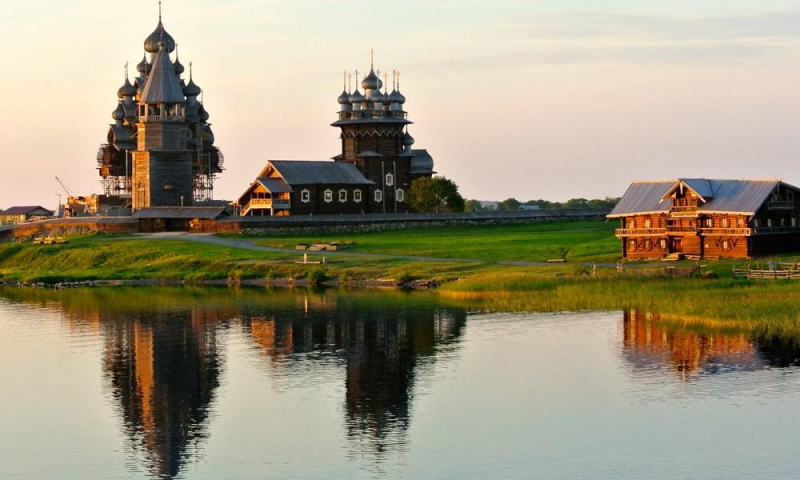
Photo: cruisemapper.com Video: Getaway -
The Catherine Palace is a Rococo palace in Tsarskoye Selo (Pushkin), Russia, 30 kilometers south of St. Petersburg. It was the Russian tsars' summer palace. The Palace is a World Heritage Site as part of the Saint Petersburg and Related Groups of Monuments.
The Catherine Palace is named after Catherine I, Peter the Great's wife who ruled Russia for two years following his death. The Catherine Palace, which began as a modest two-story palace commissioned by Peter for Catherine in 1717, owes its incredible splendor to their daughter, Empress Elizabeth, who chose Tsarskoe Selo as her main summer house. Starting in 1743, four different architects reconstructed the structure before Bartholomeo Rastrelli, Chief Architect of the Imperial Court, was commissioned to entirely remodel the palace on a scale to match Versailles.
The resulting palace, completed in 1756, measures nearly 1km in circumference and features elaborately decorated blue-and-white facades with gilded atlantes, caryatids, and pilasters designed by German sculptor Johann Franz Dunker, who also collaborated with Rastrelli on the palace's original interiors. It took nearly 100kg of gold to decorate the palace exteriors during Elizabeth's reign, an excess that Catherine the Great deplored when she discovered the public and private expenditures that had been wasted on the structure.
The interiors of the Catherine Palace are equally impressive. The so-called Golden Enfilade of staterooms, created by Rastrelli, is especially well-known and serves as the focal point of the palace tour. The most notable interiors are those in the so-called Cameron Rooms, suites designed by Catherine the Great's favorite architect, Charles Cameron, during her reign. His passion for classical symmetry and color is evident in the attractive Green Dining Room, which was initially designed for Catherine's son Paul, and the delightful Blue Drawing Room, which features blue-and-white painted silk wallpaper and a stunning painted ceiling. The Chinese Blue Drawing Room, which is showier but equally attractive, also has exquisite painted-silk wallpaper with a detailed Chinese scene
Location: Garden St, 7, Sankt-Peterburg, Russia
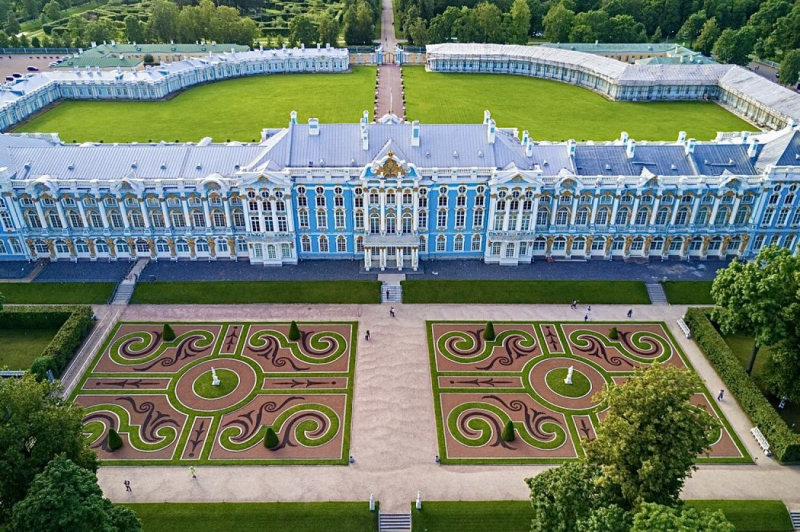
Photo: visitpeter.com Video: Государственный музей-заповедник Царское Село -
Mayakovskaya is a Moscow Metro station on the Zamoskvoretskaya Line in Moscow's Tverskoy District. It is a magnificent example of pre-World War II Stalinist architecture and one of the most famous Metro stations in the world and is regarded as one of the most attractive in the system. It is most known for the 34 mosaic ceilings representing "24 Hours in the Land of the Soviets." It served as a command center for Moscow's anti-aircraft regiment during WWII.
Regarded as one of the most beautiful historical sites in Russia, Mayakovskaya was constructed as part of the second stage of the Moscow Metro extension, which opened on September 11, 1938. If the first stage was primarily focused on the construction of the system itself, both architecturally and in terms of engineering, the stations that the second stage brought to the system appear little compared to those that the third stage brought to the system. Instead of the usual three-neath pylon station configuration, the engineers were able to overlap the vault space and support it with two colonnades, one on each side, for the first time in the world. This gave birth to a new Deep column station design, which Mayakovskaya was the first to display.
Mayakovskaya, 33 meters beneath the surface, became famous during World War II because it housed an air raid shelter. On the 7th of November 1941, the anniversary of the October Revolution, Joseph Stalin addressed a vast assembly of party leaders and ordinary Muscovites in the central hall of the station. During World War II, Stalin lived in this location. A new second north exit and vestibule were installed in 2005. Other mosaic works were created from scratch, with marble and stainless steel sculpting extensive use. The poet Vladimir Mayakovsky's bust was relocated to the new surface vestibule, which also featured a mosaic composition from Mayakovsky's poem "Moscow Sky."
Location: Tverskoy District, Central Administrative Okrug, Moscow, Russia
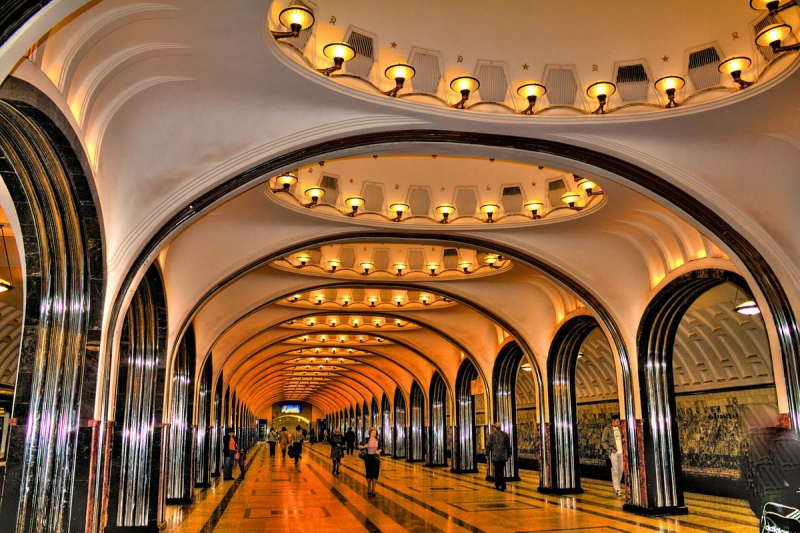
Photo: tripadvisor.com Video: Lost in Moscow -
The Bolshoi Theatre is a historic ballet and opera house in Moscow, Russia, originally created by architect Joseph Bové. It was a part of the Imperial Theatres of the Russian Empire before the October Revolution, along with the Maly Theatre (Small Theatre) in Moscow and a few theatres in Saint Petersburg (Hermitage Theatre, Bolshoi (Kamenny) Theatre, afterward Mariinsky Theatre, and others).
The Bolshoi Ballet and Bolshoi Opera are two of the world's oldest and most well-known ballet and opera organizations. With over 200 dancers, it is by far the largest ballet group in the world. The Bolshoi Ballet Academy, a leading ballet school, is the parent company of the theatre. It has a branch in Joinville, Brazil, at the Bolshoi Theater School.
The theatre's main building, which has been rebuilt and remodeled multiple times over its history, is a Moscow and Russian landmark (its famous neoclassical façade is portrayed on the Russian 100-ruble banknote). After a six-year refurbishment, the Bolshoi reopened on October 28, 2011. The renovation is expected to cost 21 billion rubles ($688 million). However, some Russian authorities and individuals associated with it alleged that significantly more public money was wasted. The repair involved restoring the original acoustics (which had been destroyed during the Soviet era) as well as recreating the Bolshoi's historic Imperial decor.
The Bolshoi Theater's productions can be watched on three stages: the Historic Stage, the New Stage, and Beethoven Hall. Furthermore, they have just begun to employ the Boris Pokrovsky Chamber Stage. The Bolshoi's greatest source of pride is its historic stage. The opulent furnishings of the tsars' days, as well as the exceptional acoustics, can be found here. Only a ticket to the historic stage will allow you to visit the theatre's main building. The tickets for the old stage, on the other hand, are the most expensive.
Location: Teatralnaya Square 1, Tverskoy District, Moscow, Russia
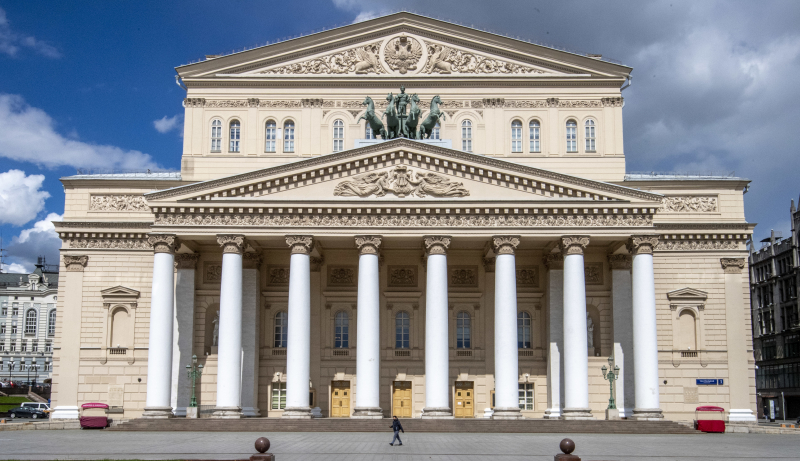
Photo: npr.org Video: Channel 4 News -
The Peterhof Palace is a collection of palaces and gardens in Petergof, Saint Petersburg, Russia, commissioned by Peter the Great as a direct reaction to Louis XIV of France's Palace of Versailles. Originally intended for country dwelling in 1709, Peter the Great planned to extend the property following his visit to the French royal court in 1717, earning it the nickname "The Russian Versailles." Domenico Trezzini was the architect between 1714 and 1728, and the style he used provided the foundation for the Petrine Baroque style that was popular across Saint Petersburg. The gardens were also planned in 1714 by Jean-Baptiste Alexandre Le Blond, who was likely chosen because of his past work with Versailles landscaper André Le Nôtre. From 1747 to 1756, Francesco Bartolomeo Rastrelli constructed an enlargement for Elizabeth of Russia. The palace complex, along with the city center, is a UNESCO World Heritage Site.
A 16-meter-high bluff less than 100 meters from the shore is the most prominent natural feature of Peterhof. Lower Gardens (Nizhny Sad), which account for the majority of Peterhof's land area, are constrained between this bluff and the coast, reaching east and west for around 200 meters. The majority of Peterhof's fountains, as well as various tiny palaces and outbuildings, are housed here. The Alexandria Park, located east of the Lower Gardens, contains 19th-century Gothic Revival architecture like the Kapella.
The Grand Palace is located in the center of the Lower Gardens (Bolshoi Dvorets). Upper Gardens are located behind (to the south) of it (Verhnyy Sad). The Grand Cascade is located on the cliff face beneath the Palace (Bolshoi Kaskad). This, together with the Grand Palace, serves as the complex's focal point. The Sea Channel (Morskoi Kanal), one of the most significant waterworks of the Baroque period, begins at its foot and bisects the Lower Gardens.
Location: Petergof, Saint Petersburg, Russia
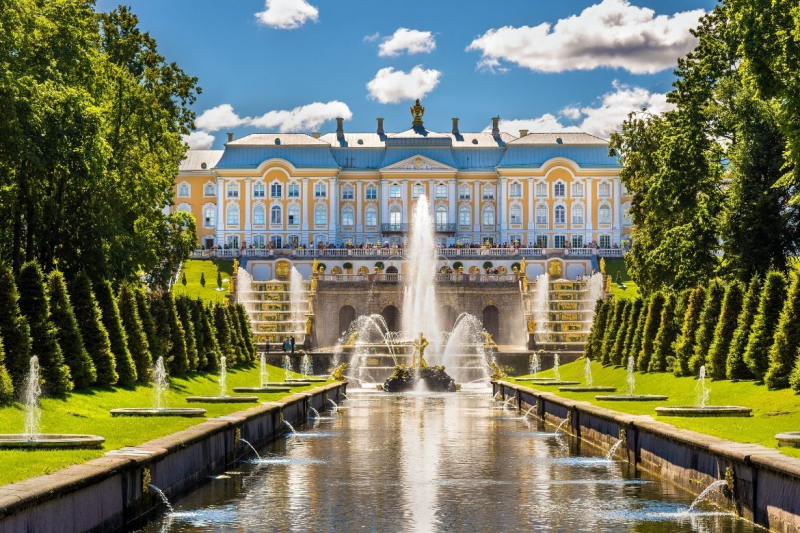
Photo: globeguide.ca Video: Places & People































